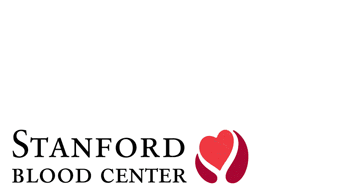Woman Will Make 500th Blood Donation Dec. 29 at Stanford Blood Center
December 20, 2010
Attention News Desk: Press Release (for immediate release)
MEDIA CONTACT:
Brooke Wilson (205) 540-1569
brookewilson@stanford.edu
WHAT: First woman to make 500 blood donations at Stanford Blood Center
WHO: Linda Johnson, Moss Beach resident
WHEN: Wednesday, Dec. 29, at 9:30 a.m.
WHERE: Stanford Blood Center – 780 Welch Road, Suite 100 in Palo Alto
NOTE: Media are invited to document the donation and interview Johnson.
STANFORD, Calif. — On Dec. 29, blood donor Linda Johnson will become the first woman to make 500 donations at the Stanford Blood Center. As she has for more than two decades, she will donate through a specialized two-hour process that allows the center to collect specific blood components such as platelets. This donation type allows Johnson to donate up to 24 times a year. Whole-blood donors are limited to a maximum of about six donations per year.
“I’ve been a blood donor my whole life,” said Johnson who began donating at other centers in college and through blood drives at work. She began giving at the Stanford center more than 20 years ago. “How much time have I spent in those chairs?” she wondered.
Johnson carpools with fellow platelet donor Stan Jensen from Moss Beach to the Stanford center in Palo Alto every other week to donate.
When Johnson was called several years ago to donate platelets for a specific patient for whom she was a match, it cemented her commitment to donate as often as she was allowed. “I’m saving someone’s life, and for me it’s just giving some of my time,” she said.
Currently, Stanford donors Eric Buhr, David Mitchell and Dick Tagg are the only others to have given blood more than 500 times at the center.
Platelets collected through an automated procedure help people undergoing cancer therapy and leukemia patients who do not have enough platelets either because of their disease or their treatment, which can damage bone marrow and result in hemorrhage. Transfusions of platelets can help keep these patients alive while allowing enough time for their therapy to work.
Donors should be in good health with no cold or flu symptoms. They must eat well prior to donation, drink fluids and present photo identification at the time of donation. The process takes about an hour. For more information, visit smstaging.stanford.edu/bloodcenter.
# # #
The Stanford University School of Medicine consistently ranks among the nation’s top medical schools, integrating research, medical education, patient care and community service. For more news about the school, please visit http://mednews.stanford.edu. The medical school is part of Stanford Medicine, which includes Stanford Hospital & Clinics and Lucile Packard Children’s Hospital. For information about all three, please visit http://stanfordmedicine.org/about/news.html.
Stanford Blood Center was created at the Stanford University School of Medicine in 1978 to meet the complex transfusion needs of Stanford Hospital & Clinics and Lucile Packard Children’s Hospital, as well as provide tailored blood products and clinical trial services for school researchers. Today the center provides blood products to eight local hospitals and is a recognized leader in the field of transfusion medicine. More information is available at https://bloodcenter-stg.stanford.edu.
